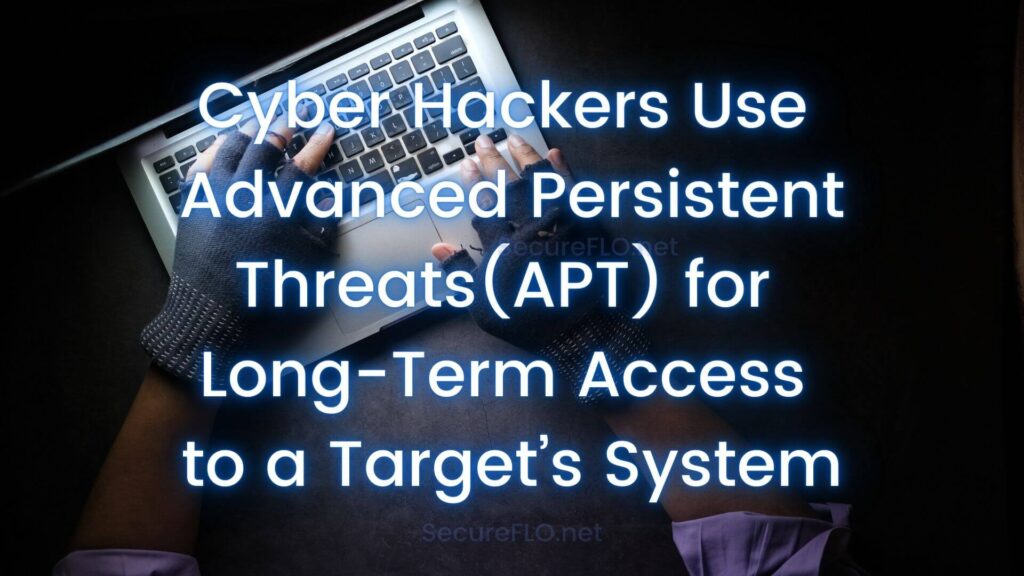



Cyber Hackers Use Advanced Persistent Threats(APT) for Long-Term Access to a Target’s System secureflo.net
Attackers often use spear-phishing attacks or zero-day exploits to initially gain access to a network. A spear phishing attack is when a hacker sends a fraudulent email (or voicemail) message to a targeted individual or group. The message is designed to trick the recipient into revealing sensitive information or enable the hacker to deploy malicious software on the victim’s infrastructure. Zero-day exploits are attacks targeted at software weaknesses for which no software patch has yet been released. Attackers can also plant malware on websites that employees are likely to visit.
Once the attackers have gained access, they plant remote administrative software in a target network or create alternate pathways known as “back doors” to allow stealth access to network infrastructure. These actions help conceal their presence even if the initial attack vectors are detected by the system or network administrators.
Attackers who can carry out some privileged activities on the system use cracking techniques to acquire administrator privileges of target computers. These privileges are then extended to network-wide access through means such as Windows domain administrator accounts.
With firm access in place, attackers will then collect information about surrounding infrastructure and trust relationships. The attackers camouflage their actions as legitimate to make sure their activities are not detected as anomalies.
Once the time is right, attackers will expand their conquest to other workstations, servers, and infrastructure elements. The goal is to embed themselves firmly throughout the system.
APTs play the “long game,” carrying out undetected activities after gaining control of the network and associated systems. They execute control over access channels and credentials acquired in previous steps until these are needed. Reports show APTs might be present in a network for months or even years before any follow-on action is taken.
When they have gathered the information they needed from the system or network, the hacker can then execute their initial goal for invading the system. Goals for an APT hack may include shutting down the system or services, using target networks as a launching point for further activities, or exfiltrating sensitive data. Once the goal of the hack is achieved, attackers may repeat the steps above to remain connected to the network and look for additional opportunities to access the target’s systems and data.
A detailed analysis of cyber-attacks requires significant technical subject matter expertise. The aftermath of an APT attack can be overwhelming for an organization to handle since attackers usually leave multiple backdoor open that allows them to return in the future. Research indicates that some traditional cyber defenses might not be enough to protect against such attacks. However, implementing rigorous defense-in-depth, vulnerability management programs, and training the workforce on social engineering techniques can help develop a defensive posture and reduce the risk of a successful APT attack.
We first published this blog post on SafetyDetectives.com, a publishing group of cyber security experts, privacy researchers, and technical product reviewers who want to provide readers accurate and valuable information so they can make informed decisions about staying safe, secure, and protected on the internet.





